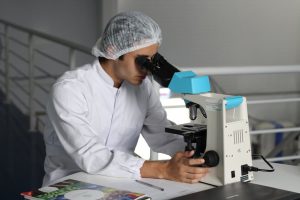As the global population continues to rise, the need for sustainable and efficient agricultural practices has never been more urgent. Two innovative methods that have gained significant traction in recent years are aquaponics and hydroponics. Both systems eliminate the need for traditional soil farming, yet they employ distinct approaches to growing plants and raising fish. Understanding the differences, advantages, and challenges of these two methods can help aspiring farmers and environmentally conscious consumers make informed decisions about food production.
Aquaponics combines aquaculture, the farming of fish, with hydroponics, the growing of plants in a nutrient-rich water solution. This symbiotic relationship allows plants to thrive on the waste produced by fish, while the plants help filter and purify the water for the fish. In contrast, hydroponics relies solely on nutrient solutions to grow plants without soil, providing them with direct access to essential minerals and elements. Both systems aim to maximize efficiency and minimize environmental impact, but they do so in fundamentally different ways.
One of the key advantages of aquaponics is its ability to create a closed-loop ecosystem. In this system, fish waste provides organic nutrients for the plants, which in turn help to clean the water for the fish. This mutualistic relationship not only reduces the need for chemical fertilizers but also promotes biodiversity within the farming environment. Additionally, aquaponics systems can produce both fish and vegetables, offering farmers a dual source of income and a diverse food supply. However, managing such a system requires a deeper understanding of both aquaculture and horticulture, which may pose a challenge for those new to farming.
On the other hand, hydroponics offers a more straightforward approach to soil-less farming. By using various growing mediums such as rock wool, clay pellets, or coconut coir, hydroponics allows for precise control over nutrient delivery and environmental conditions. This method can lead to faster plant growth and higher yields, as plants are not competing for nutrients found in soil. Hydroponics systems can also be easier to set up and maintain, making them more accessible for urban gardeners and small-scale producers. However, the reliance on synthetic fertilizers can raise concerns about the long-term sustainability of these systems.
Another notable difference lies in the water usage of each method. Aquaponics systems are often praised for their water efficiency, as they recirculate water between fish tanks and plant beds, using significantly less water than traditional farming methods. Hydroponics, while also more water-efficient than soil-based agriculture, may require more water than aquaponics due to the need for constant nutrient solution replenishment. This can be a critical consideration in areas facing water scarcity or drought conditions, making aquaponics an appealing option for sustainable agriculture.
In conclusion, both aquaponics and hydroponics present unique opportunities for modern farming, each with its own set of advantages and challenges. Aquaponics fosters a balanced ecosystem that produces both fish and plants, promoting sustainability and biodiversity. Conversely, hydroponics offers streamlined management and faster growth, though it may rely more heavily on synthetic inputs. Ultimately, the choice between these two approaches will depend on individual goals, resources, and expertise. As the world continues to search for innovative solutions to food production, both aquaponics and hydroponics will play vital roles in shaping the future of agriculture.



